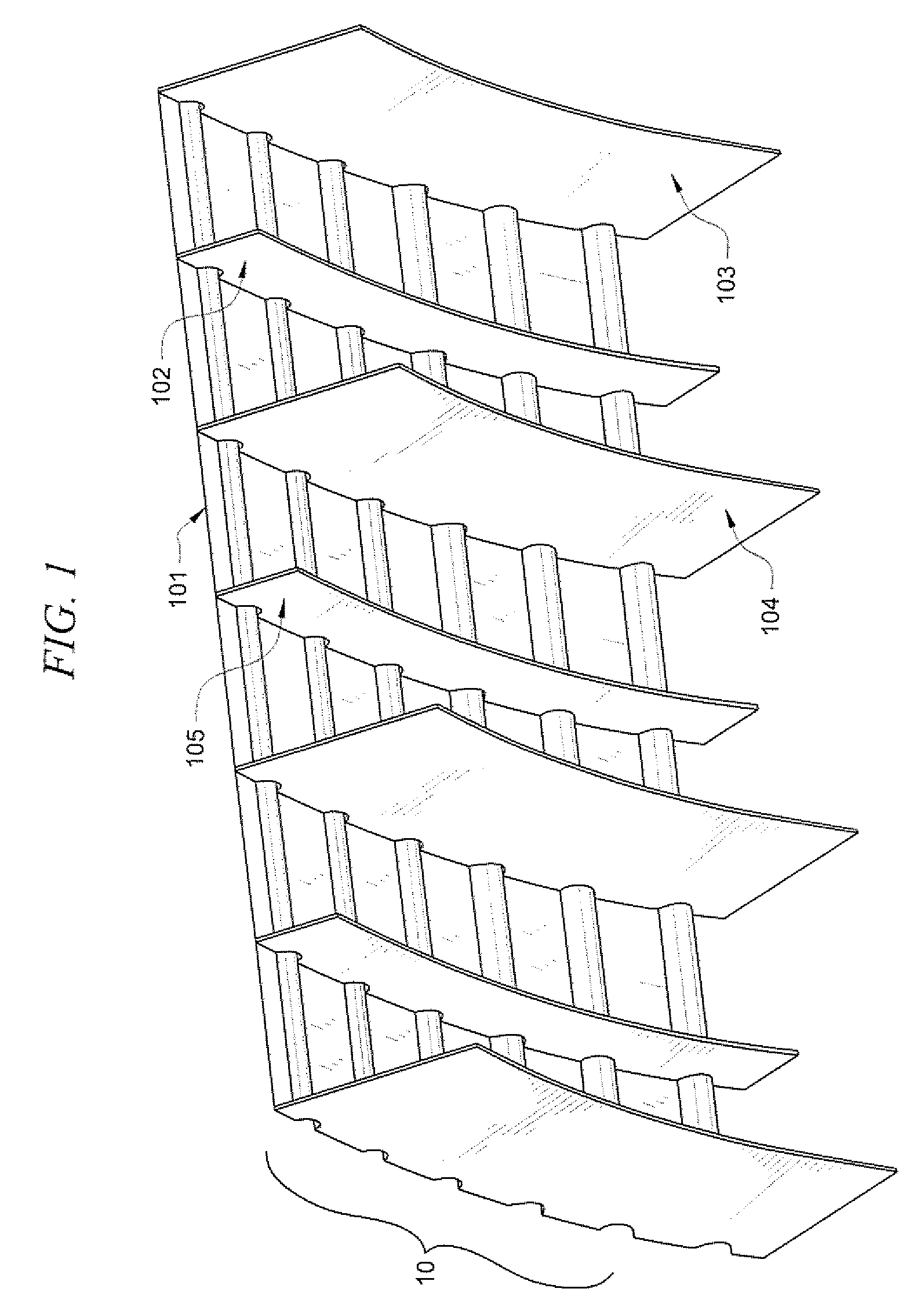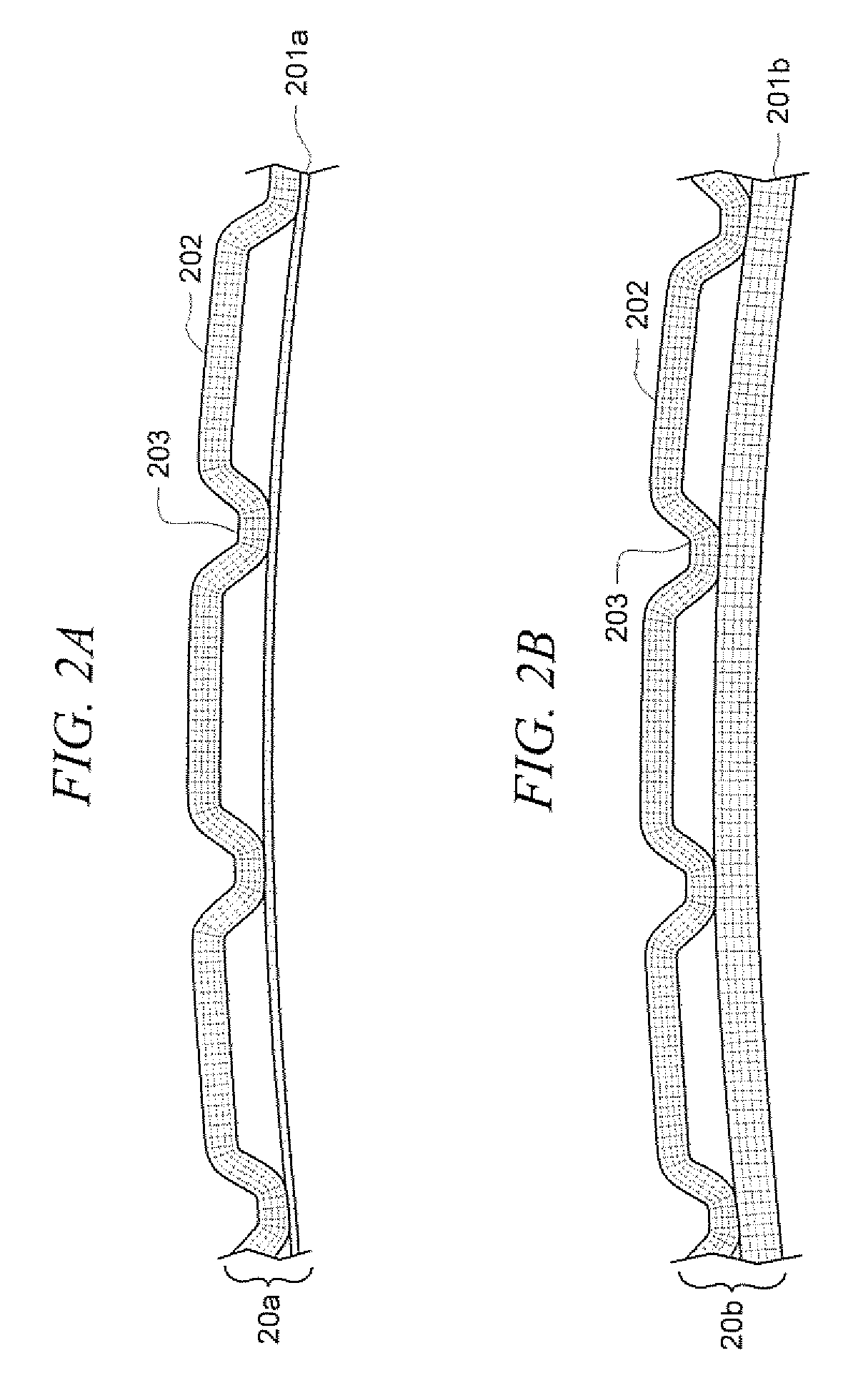Coefficient of thermal expansion control structure
a control structure and thermal expansion technology, applied in the field of control of thermal expansion of tools, can solve the problems of dimensional mismatch, dimensional mismatch, and difficulty in maintaining dimensional accuracy, so as to reduce the thickness of the face-sheet, reduce the thermal expansion of composite tooling, and constrain the diametric growth of the tooling
- Summary
- Abstract
- Description
- Claims
- Application Information
AI Technical Summary
Benefits of technology
Problems solved by technology
Method used
Image
Examples
embodiment a
[0030]In an embodiment of the present invention, the face-sheet thickness of the mandrel prior to any modifications or addition of substructure was 0.75 in. The face-sheet thickness was then modified and reduced by approximately one-half to a thickness of 0.375 in. In this embodiment, headers (such as headers 103, 104 depicted in FIG. 1) are incorporated as part of the mandrel substructure. The spacing between the headers was originally 36 in. However, the header spacing is preferably modified and reduced by one-third to a distance of 24 in. between headers. By reducing the face-sheet thickness in conjunction with reducing the distance of the header spacing, the effective CTE is preferably reduced from approximately 8.7×10−6 in. / in. ° F. to approximately 3.1×10−6 in. / in. ° F. Accordingly, the effective CTE may preferably be reduced by over 50% based on modifying the header spacingi- and thinning the face-sheet of the mandrel.
embodiment b
[0031]In a further embodiment of the present invention, headers (such as headers 103i, 104 depicted in FIG. 1) are preferably incorporated into the mandrel. Gussets (such as gussets 102, 105 depicted in FIG. 1) measuring approximately 2 in. tall are then preferably added between the headers. Inclusion of the headers as well as the gussets preferably achieves an effective CTE of approximately 3.0×10−6 in. / in. ° F. This effective CTE is essentially equivalent to that achieved by reducing the face-sheet thickness and header spacing as discussed previously with respect to Embodiment A.
embodiment c
[0032]In yet another embodiment of the present invention, similar to Embodiments A and B, headers (such as headers 103. 104 depicted in FIG. 1) are preferably incorporated as part of the substructure of the mandrel. Also, similar to Embodiment B, gussets (such as gussets 102, 105 depicted in FIG. 1) are preferably added between the headers of the mandrel. However, in this embodiment, gussets taller than those utilized in Embodiment B are incorporated as part of the substructure of the mandrel. In an embodiment of the invention the 2 in. tall gussets of Embodiment B are replaced with 6 in. tall gussets. By incorporating taller gussets into the substructure of the mandrel, the effective CTE may preferably be further reduced to approximately 2.8×10−6 in. / in. ° F.
PUM
| Property | Measurement | Unit |
|---|---|---|
| thermal expansion | aaaaa | aaaaa |
| coefficient of thermal expansion | aaaaa | aaaaa |
| CTE | aaaaa | aaaaa |
Abstract
Description
Claims
Application Information
 Login to View More
Login to View More - R&D
- Intellectual Property
- Life Sciences
- Materials
- Tech Scout
- Unparalleled Data Quality
- Higher Quality Content
- 60% Fewer Hallucinations
Browse by: Latest US Patents, China's latest patents, Technical Efficacy Thesaurus, Application Domain, Technology Topic, Popular Technical Reports.
© 2025 PatSnap. All rights reserved.Legal|Privacy policy|Modern Slavery Act Transparency Statement|Sitemap|About US| Contact US: help@patsnap.com



